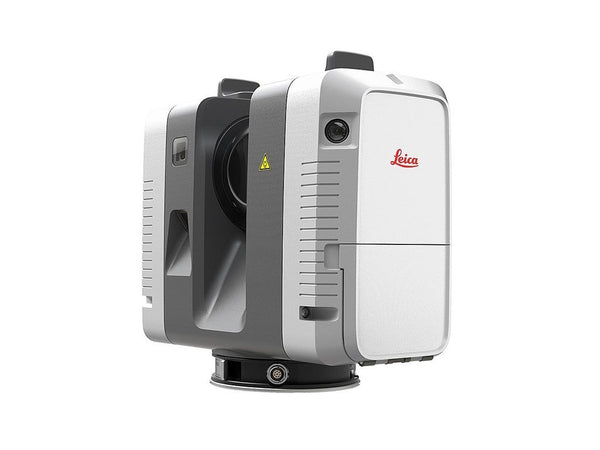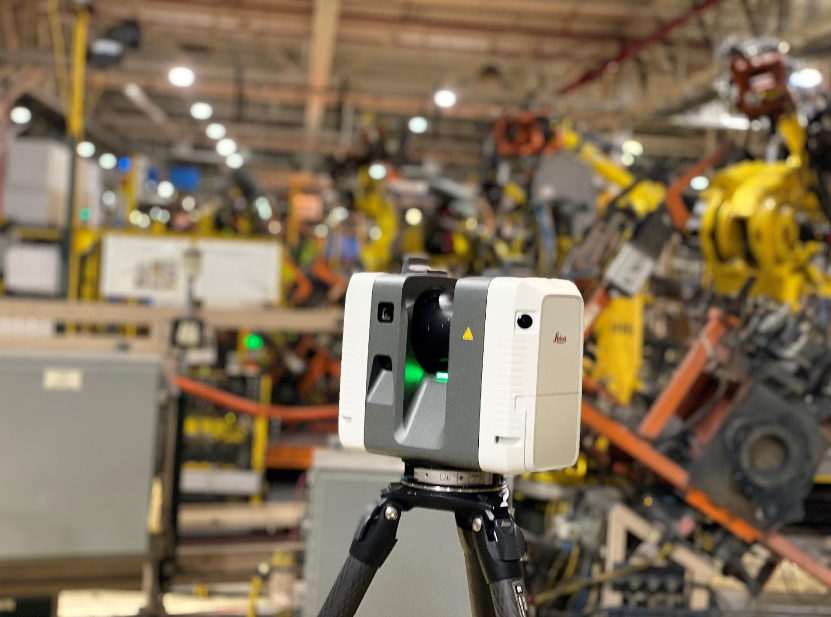The Future of Accuracy Measurement: Comprehending the Duty of 3D Laser Scanning Technology
The landscape of precision dimension is developing with the arrival of 3D laser scanning technology. This advancement promises improved precision and efficiency throughout numerous sectors. As markets start to embrace these improvements, the effects for project administration and implementation become progressively considerable. Nonetheless, the transformative effects of this technology extend beyond simple numbers and measurements, hinting at a more comprehensive change in how experts approach their job. What might this indicate for the future?
What Is 3D Laser Scanning Technology?
3D laser scanning innovation is an advanced method made use of to record precise three-dimensional measurements of physical objects and environments. This technology utilizes laser beams to collect information factors, which are after that refined to produce in-depth digital representations of the scanned subjects. By discharging hundreds of laser pulses per secondly, 3D laser scanners can precisely tape the shape, size, and spatial partnerships of numerous surfaces.
The process generally involves placing the scanner at various vantage points to capture extensive information. The resulting factor cloud, a collection of millions of data points, can be assessed and exchanged 3D versions. Applications of this modern technology period several fields, including design, design, and heritage conservation, where it assists in documentation and evaluation. As a non-intrusive technique, 3D laser scanning reduces disruption to the setting, enabling for detailed analyses of both existing structures and all-natural landscapes, therefore improving understanding and helping with educated decision-making.
Trick Advantages of 3D Laser Scanning in Numerous Industries
3D laser scanning technology supplies significant benefits throughout various markets by providing improved precision and precision in measurements. This innovation not just streamlines process yet likewise leads to substantial time and expense savings. As companies increasingly adopt this cutting-edge technique, the advantages become obvious in improved project results and performances.
Enhanced Accuracy and Precision
The combination of laser scanning innovation has actually revolutionized the method markets come close to dimension and data collection. This technology offers an extraordinary degree of precision, capturing millions of data points in a single scan. Because of this, experts throughout various fields, such as production, style, and design, can develop very described 3D versions that show real-world problems. Boosted precision decreases errors connected with typical dimension techniques, making sure that styles and buildings are based on precise data. In addition, the capability to catch intricate information permits better evaluation and decision-making, eventually causing improved end results. By leveraging 3D laser scanning, markets can achieve greater requirements of quality, making it an indispensable tool for accurate measurements.
Time and Cost Performance
Performance in time and cost is a substantial advantage offered by laser scanning modern technology, transforming task execution throughout various markets. By rapidly catching detailed 3D data, laser scanning reduces the moment invested on hands-on dimensions and minimizes the danger of mistakes. This swift data acquisition assists in faster decision-making and job timelines, allowing teams to designate resources much more properly. Additionally, the innovation lowers the need for rework, as precise versions lead to much better planning and execution. Industries such as building and construction, style, and manufacturing benefit considerably, seeing reduced prices associated with labor and materials. Overall, 3D laser scanning not just boosts operational efficiency but also adds to substantial cost savings, making it a very useful device in today's affordable landscape.
Applications of 3D Laser Scanning in Style and Building and construction
As architectural and construction tasks grow significantly complex, the fostering of laser scanning modern technology has actually arised as a transformative option. This technology provides precise dimensions and thorough 3D depictions of existing structures, helping with more exact preparation and design processes. Engineers use 3D laser scanning to produce digital versions that catch intricate information, making sure that improvements and brand-new constructions straighten completely with existing conditions.

The Duty of 3D Laser Scanning in Manufacturing Processes
3D laser scanning plays an important duty in manufacturing procedures by improving top quality control with precise measurements and information collection. This technology permits producers to recognize inconsistencies early, reducing mistakes and waste. Additionally, it simplifies production operations by assisting in far better communication and sychronisation amongst teams.
Improved Top Quality Control
Quality control in producing procedures has been changed by the integration of laser scanning innovation. This cutting-edge method enables precise dimensions and thorough evaluations of parts, making certain that they meet strict high quality criteria. 3D laser scanning captures elaborate geometries and tolerances, allowing makers to detect discrepancies from style specs quickly. This innovation substantially reduces human error connected with conventional dimension approaches, giving consistent and reputable information. By facilitating real-time top quality assurance, it allows positive modifications in the manufacturing process, inevitably leading to boosted item dependability and customer complete satisfaction. As markets increasingly take on 3D laser scanning, the possibility for enhanced quality control becomes noticeable, noting a transformative shift in making methods.
Structured Manufacturing Workflow
Efficient manufacturing workflows are progressively taking advantage of the assimilation of laser scanning innovation in manufacturing procedures. This technology enables rapid, exact measurements of components and settings up, considerably minimizing the time needed for setup and changes. By catching precise geometry, makers can rapidly recognize inconsistencies in between style requirements and actual items, enabling instant corrective activities. In addition, 3D laser scanning assists in the seamless transfer of information in between style and manufacturing teams, improving cooperation and minimizing mistakes. The technology additionally sustains electronic twin development, permitting real-time monitoring and optimization of making he said procedures. As an outcome, organizations can achieve greater efficiency, decreased waste, and enhanced overall efficiency, eventually driving affordable advantage in the industry.
Maintaining Heritage: How 3D Laser Scanning Aids Cultural Conservation
As cultural heritage websites deal with the hazard of deterioration and destruction, innovative innovations such as laser scanning arise as essential tools for conservation efforts. 3D laser scanning captures intricate details of historical structures and artefacts with remarkable precision, creating digital designs that serve several purposes in preservation. These models enable accurate documentation of current problems, making it possible for specialists to monitor changes over time and analyze damage threats.
Furthermore, laser scanning assists Check Out Your URL in online remediation, helping conservators create prepare for repair work or recreating lost elements without intrusive approaches. The modern technology likewise aids in enlightening the general public, providing immersive experiences through digital excursions that highlight the importance of these sites. By incorporating 3D laser scanning into social preservation practices, stakeholders can assure that heritage is maintained for future generations while improving understanding and appreciation of historic contexts.
The Future Overview: Developments and Trends in 3D Laser Scanning Innovation
Though 3D laser scanning technology has actually currently changed various sectors, its future guarantees also higher improvements that will boost accuracy, rate, and ease of access. Arising fads show an increase in assimilation with expert system and artificial intelligence, resulting in smarter data processing and analysis capabilities. This synergy will enable quicker decision-making and more accurate end results in areas such as engineering, building, and heritage conservation.
Furthermore, advancements in equipment are anticipated to yield lighter, much more portable scanning tools, equalizing gain access to for smaller firms and individual specialists - 3D Scanning. As software program continues to evolve, user-friendly applications will certainly streamline intricate operations, making 3D scanning much more available to non-experts
The rise of cloud-based remedies will help with real-time collaboration and information sharing among stakeholders, leading the method for structured project monitoring. Collectively, these fads signal a future where 3D laser scanning modern technology ends up being a vital device in an even more comprehensive spectrum of applications.
Regularly Asked Questions
Exactly How Much Does 3D Laser Scanning Technology Expense?

What Are the Skills Called For to Operate 3D Laser Scanners?
Running 3D laser scanners needs technological proficiency, focus to detail, spatial understanding, knowledge of software application for information processing, and have a peek here an understanding of evaluating principles. Furthermore, solid analytical abilities and problem-solving capabilities are important for reliable procedure.
Can 3D Laser Scanning Integrate With Various Other Technologies?
Yes, 3D laser scanning can incorporate seamlessly with other modern technologies, such as Geographic Information Solution (GIS), Structure Details Modeling (BIM), and enhanced reality, improving data precision and helping with enhanced evaluation throughout various industries and applications. - 3D Scanning
What Is the Normal Scanning Array of These Devices?
The common scanning variety of 3D laser scanning tools differs extensively, generally between 50 meters to over 1,000 meters, depending upon the design and application, affecting their viability for various precision dimension jobs and atmospheres.
Just how Lengthy Does a 3D Laser Scanning Task Take?
A 3D laser scanning task generally takes anywhere from a few hours to a number of days, depending upon aspects such as job dimension, complexity, and needed detail. Each project's timeline can vary considerably based on these components.
The landscape of precision dimension is evolving with the advent of 3D laser scanning modern technology. 3D laser scanning technology is a sophisticated approach made use of to record specific three-dimensional dimensions of physical items and atmospheres. 3D laser scanning technology provides significant benefits throughout different sectors by providing enhanced accuracy and precision in measurements. 3D laser scanning technology has actually currently transformed different markets, its future promises also better advancements that will enhance precision, rate, and access. 3D laser scanning technology commonly sets you back in between $10,000 and $100,000, depending on the tools's features and capacities.